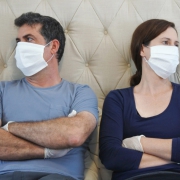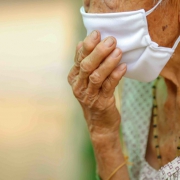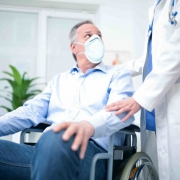AARP Creates COVID-19 Dashboard to Help Nursing Homes
As COVID-19 still continues its rampant spread among nursing home residents and staff, valuable and accurate data pinpointing areas of concern is often rife with haphazard data collection providing skewed information. The most recent Kaiser Family Foundation data analysis indicates that federal policymakers are slow in meaningful response to the nursing home coronavirus crisis. The increasing loss of life is often due to this inadequate federal and state response during this fall flu season. To better address the concerns, AARP has created a COVID-19 Dashboard that will standardize information collection and provide better data integrity. The 5-point plan aims to save lives by better protecting nursing home and long-term care facility residents at state and federal levels through more accurate data collection and its use in timely responsiveness.
- Ongoing testing and sufficient personal protective equipment (PPE) for residents and staff must be a priority. PPE must also be readily available for inspectors and any visitors.
- Create better transparency with a focus on the daily public reporting of COVID-19 cases and deaths in facilities. Improving communication with families about transfers and discharges and increase accountability for state and federal funding provided to facilities.
- Following federal and state guidelines for safety, ensure access to in-person visitation as well as the continuation of virtual visitation for all residents.
- Ensure residents’ quality care via adequate oversight, staffing, and access to in-person formal advocates known as long-term care Ombudsmen.
- Reject immunity as it relates to COVID-19 for long-term care facilities.
The AARP Nursing Home COVID-19 Dashboard is a collaboration between the AARP Public Policy Institute and the Scripps Gerontology Center at Miami University in Ohio. The dashboard is a four-week snapshot of the coronavirus infiltration into nursing homes and its impact on residents and staff. The goal is to promptly identify specific areas of concern at a state and national level.
A second dashboard will aggregate and analyze the self-reported data from nursing homes provided by the Centers for Medicare and Medicaid Services (CMS) that cover specific three 4-week time intervals from mid-summer into autumn. This dashboard will specifically gather five key measures from nursing homes: resident death per 100 residents, resident cases per 100 residents, staff cases per 100 residents, percentage of nursing homes without a one-week supply of PPE, and percentage of nursing homes with staffing shortages. There will also be an additional 33 data points providing more information about each category and updated every month. As tracking continues and trends present themselves, additional categories will evolve to follow other measures of interest.
The second dashboard already presents five key findings, including:
- Nursing home resident and staff COVID-19 deaths and cases had been on the decline at a national level during the summer. The 2020 flu season brings an uptick to cases, and coronavirus community spread continues to rise rapidly throughout most of the country, increasing vulnerability to nursing homes, staff, and residents.
- State trends vary dramatically. Many states with previously high death and infection rates in the summer are improved in the most recent weeks; however other states, particularly in the Midwest, see rapidly increasing rates of cases and deaths in nursing homes.
- The variation across states can be as high as about 1 out of every 52 nursing home residents to no resident deaths in the four weeks between September 21 to October 18. Nationally, the same reporting period reported an average death rate of one in every 215 residents.
- Direct care staff continues to have infections at a very high rate during this same period from September to October. While more than one-quarter (26 percent) of nursing home residents had confirmed COVID-19 cases, twice as many (53 percent) had confirmed staff cases. More than 90 percent of the nursing home staff tested positive for the coronavirus in the hardest-hit states.
- All states indicate nursing homes have a PPE shortage, which is defined as not having a one-week supply of surgical masks, N95 masks, gloves, gowns, and eye protection. In the best-performing state, only 5 percent of nursing homes reported a PPE shortage, while the lowest-performing state had 53 percent of nursing homes reporting a PPE shortage.
Reliable, timely data regarding nursing homes and COVID-19 can help facility operators and personnel gain a better understanding of the crisis facing nursing homes and other long-term care facilities. The federal government has begun to require nursing homes to self-report COVID-19 cases and deaths at the national level and ordering testing, providing PPE, issuing guidance for the re-instituting of in-person visits, and more. However, as cases and deaths continue to rise, AARP and other organizations will continue to accumulate data and shine a light on the tragedy befalling nursing home residents to make policy and lawmakers accountable to the crisis. AARP has a webpage providing more information for you or a loved one in a nursing home.
If you have questions about anything you have read or would like to speak to us about planning for you or a loved one, please don’t hesitate to reach out. Please contact our Ruston, LA office by calling us at (318) 255-1760 or schedule an appointment to discuss how we can help.



 If you and your spouse are on each other’s last nerve, get professional help. Marriage counseling can be very effective and it is always worth a try. Also, check out Dr. Wilcox’s book “We Before Me” (coming soon).
If you and your spouse are on each other’s last nerve, get professional help. Marriage counseling can be very effective and it is always worth a try. Also, check out Dr. Wilcox’s book “We Before Me” (coming soon).

